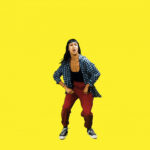Roblox developers are always looking for creative ways to enhance their games, and animated GIFs can add a dynamic touch. Previously, displaying GIFs in Roblox was a cumbersome process, often requiring uploading each frame separately or relying on SurfaceGuis. However, with the introduction of texture offsets, animating GIFs, especially Roblox Dance Gifs, has become significantly easier and more efficient.
This article will guide you through using texture offsets to bring your roblox dance gifs to life in your Roblox creations, using just a single image upload. This method not only simplifies the process but also optimizes performance, making it ideal for various applications within Roblox, from UI elements to in-world animations.
Converting GIFs to Spritesheets for Roblox Animation
The secret to this efficient method lies in converting your GIF into a spritesheet. A spritesheet combines all frames of your animation into a single image, arranged in a grid. This single image is then used by Roblox, and texture offsets are employed to cycle through each frame, creating the animation effect.
To convert your roblox dance gif (or any GIF) into a spritesheet, online tools are readily available. A recommended tool for this conversion is:
https://jacklehamster.github.io/utils/gif2sprite/
This tool simplifies the process, allowing you to upload your GIF and download a ready-to-use spritesheet. After conversion, you’ll obtain a spritesheet image that looks similar to this:
[
Once you have your spritesheet, note down the number of columns, rows, and total frames. This information is crucial for the Roblox script that will control the animation. For instance, in the example spritesheet, there are 4 columns and 5 rows.
Implementing the Spritesheet Animation in Roblox
With your spritesheet ready and the frame data noted, the next step is to implement the animation in Roblox. This involves using a script to manipulate the texture offset property of an ImageLabel or Texture object.
You will need a script that takes the spritesheet texture ID, column count, row count, and frames per second (FPS) as input. The script then calculates the texture offset based on the frame number and updates it periodically to create the animation. The provided example in the original post offers a starting point for such a script. You can adapt it to suit your specific needs and roblox dance gif animation.
For those who prefer a hands-on approach, an uncopylocked game and a place file are available in the original post, allowing you to directly examine and utilize the scripts in action.
Conclusion: Animating Roblox Dance GIFs Made Simple
Using texture offsets to animate roblox dance gifs in Roblox presents a streamlined and efficient alternative to older methods. By converting GIFs to spritesheets and leveraging texture offsets, developers can easily incorporate engaging animations into their Roblox experiences with minimal effort and optimized performance. This technique opens up new possibilities for creative expression and dynamic content within the Roblox platform.

